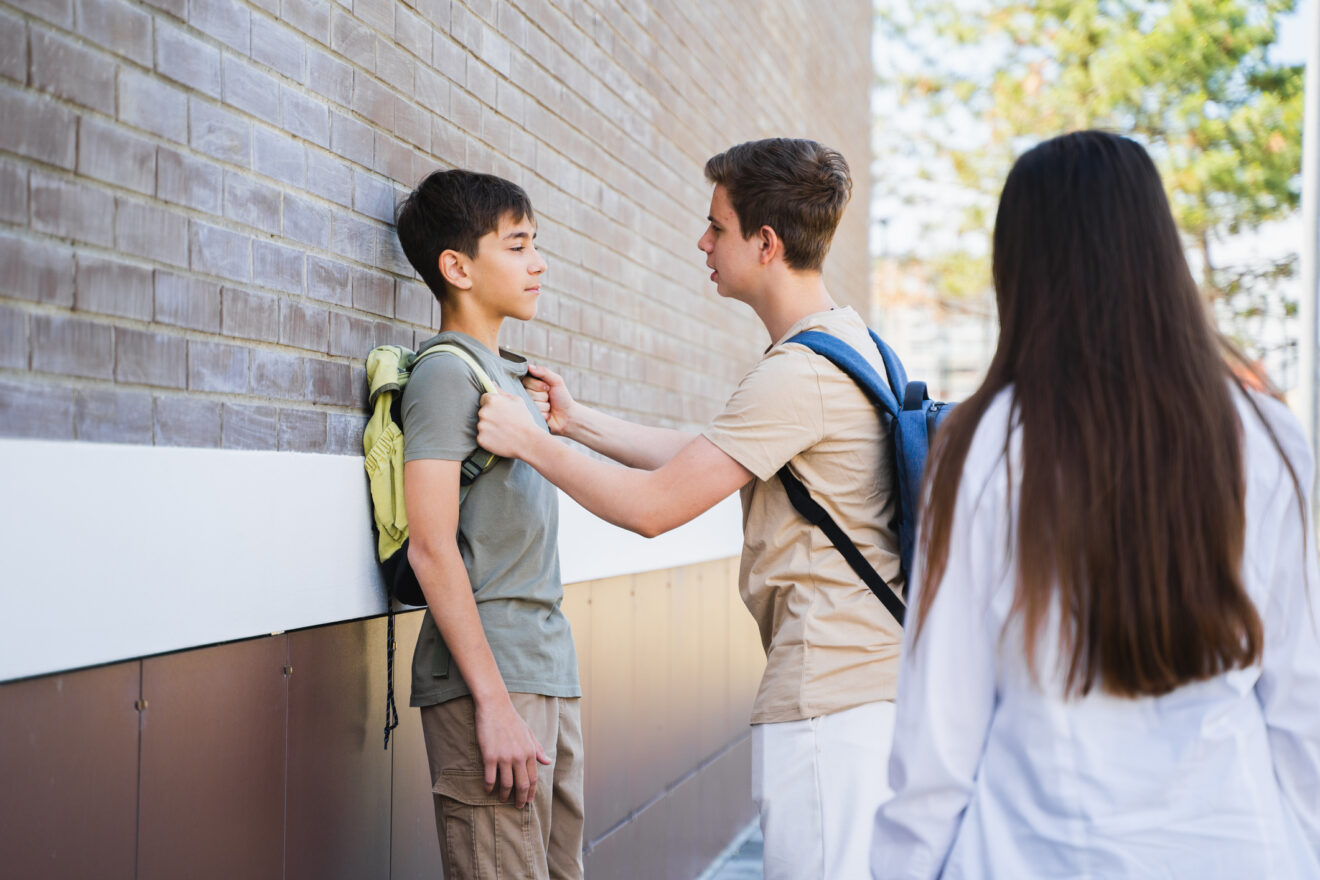Insights is a SmartBrief Education Originals column that features perspectives from noted experts and leaders in education on the hot-button issues affecting schools and districts. All contributors are selected by the SmartBrief Education editorial team. Stephanie Taylor writes about the trauma-informed approach to student behavior.

As educators, school psychologists and mental health counselors, traditional methods that we have relied on to address student behaviors that detract from educational success are no longer enough. If you’ve spent any time in a school, are an educator or find yourself scrolling through #TeacherTok, you know what I’m talking about. Because of this, there has been an increase in discussion about mental health. And while mental health — how we think and feel — is a great place to start, what about how those challenging thoughts and feelings translate into unhealthy behaviors?
Mental Health Month just ended, but it’s never too late to consider the impact a trauma-informed approach can have. Trauma-informed practice shifts the focus from “What’s wrong with you?” to “What happened to you?” There is a need to better equip our educators, our students and ourselves with tools that address both the behaviors and the underlying motivations, whether they are tied to mental health or not.
What’s happening in schools today
While many schools are ready to move on from the pandemic, the pandemic is not done with our students. Three years ago, children learned that their entire lives could be changed in an instant. Since then, mental health challenges, including the number of students who are stressed, anxious, defiant, apathetic and on edge is larger than ever before. This trauma is having an impact on mental health and also driving behaviors that are disruptive for the classroom and learning. Public schools are seeing increased incidents of classroom disruptions related to student misconduct (56%), rowdiness outside of the classroom (49%) and acts of disrespect towards teachers and staff (48%), according to a study by the National Center for Education Statistics for the 2021-22 school year.
Add to that,the now all-too-common occurrences of school shootings, natural disasters and other threats that further shatter the safe and consistent environment that educators are working hard to create. Since the start of this year, there have been 17 school shootings that have resulted in injuries or deaths.
The elephant in the room is that students are not the only ones in school who are dealing with these traumas. Many teachers have told me they need to hype themselves up before going to work. They must manage their own feelings about the risk of physical danger so that they can show up for their students. They must be prepared to handle verbal abuse while working desperately to engage resistant students. They are also managing feelings of guilt about how shortcomings and classroom disruptions are affecting other students who are missing out on critical educational opportunities.
Shifting to a trauma-informed approach
There are many attempted solutions in practice today. One standard way to address these disruptive issues in the school setting is a functional behavior approach like cognitive behavioral therapy. This approach emphasizes what is going on in the person’s current life rather than what has led up to their difficulties. It is meant to help the person connect how their thoughts translate into actions and understand how changing their thoughts can change their actions. While effective in treating a wide range of problems, it is not proving to be as effective when dealing with issues facing students today.
Some of this stems from the fact that it is much harder to change the thoughts and opinions about the kind of trauma that kids and teachers are currently experiencing. It is hard to downplay some of the negative thoughts children might be having if those thoughts are accurate.
Lasting change for students in schools is more likely to happen with the use of a trauma-informed approach. This type of therapy connects observable behaviors to their underlying cause, whether that be a mental health need or not. It also uses these critical pillars for intervention that can be particularly helpful in such situations:
- Establish safety in the therapy experience. This can come in the form of establishing consistency, reliability, predictability, availability, honesty and transparency.
- Create comfortable connections. Establishing a positive relationship between the child and therapy provider is necessary for healthy human development, but even more so when working through feelings stemming from trauma.
- Teach emotion and impulse management. Teaching self-regulation skills can help students effectively manage their emotions and impulses.
Putting this approach into practice
So, what does this approach look like in action?
1) Administrators need to acknowledge the trauma state of mind teachers and other staff members are in. Establishing a comprehensive, trauma-informed system starts with those who create the school culture: teachers and staff. Teachers should be approached with their trauma in mind. The everyday challenges they face in the classroom environment impact their mental health. They need to be out of fight or flight mode enough to look at a student’s behavior through trauma-informed eyes rather than thinking all behavior is willful disobedience alone.
Consider how to foster a sense of safety for teachers. Establish an open feedback loop to work through feelings that help strengthen connections. Uncover where your team may need help self-regulating in high-stress situations, and invest in support.
2) Provide multitiered support for students. Students desperately need comprehensive programs that don’t see their behaviors as intentional disobedience. Children are complex individuals who need a program that is as diverse as they are. This type of diverse program should:
- Focus on behaviors and mental health together.
- Use a trauma-informed approach rather than relying solely on CBT.
- Seek to destigmatize the need for behavioral support.
- Not let mental health initiatives become a way to excuse unhealthy behaviors.
- Truly look at students as complex beings who may not fit an exact tiered model.
A multitiered system of support can help frame a student’s needs. It should be a way to determine when a student is not having their needs met by their current services, not simply a protocol for the services themselves. It’s helpful for schools to think, “What is the trigger that tells us the student is not improving so we can make a change early?”
At the end of the day, we all want the same thing: happy and healthy teachers teaching happy and healthy children. We can get through this by supporting each other and assuming that we’re all doing our best — students included. When we assume everyone is trying their best, it becomes easier to see the behaviors as what they are: manifestations of underlying stress, needs and skill gaps that can be addressed.
Stephanie Taylor, Ed.S, NCSP, is a licensed school psychologist and serves as vice president of Clinical Innovation & Outreach for Presence. She joined Presence in 2014 to develop the company’s leading remote evaluation service and technology offerings.
Opinions expressed by SmartBrief contributors are their own.
_________________________
Subscribe to SmartBrief’s FREE email ASCD newsletter to see the latest hot topics in education. It’s among SmartBrief’s more than 250 industry-focused newsletters.
